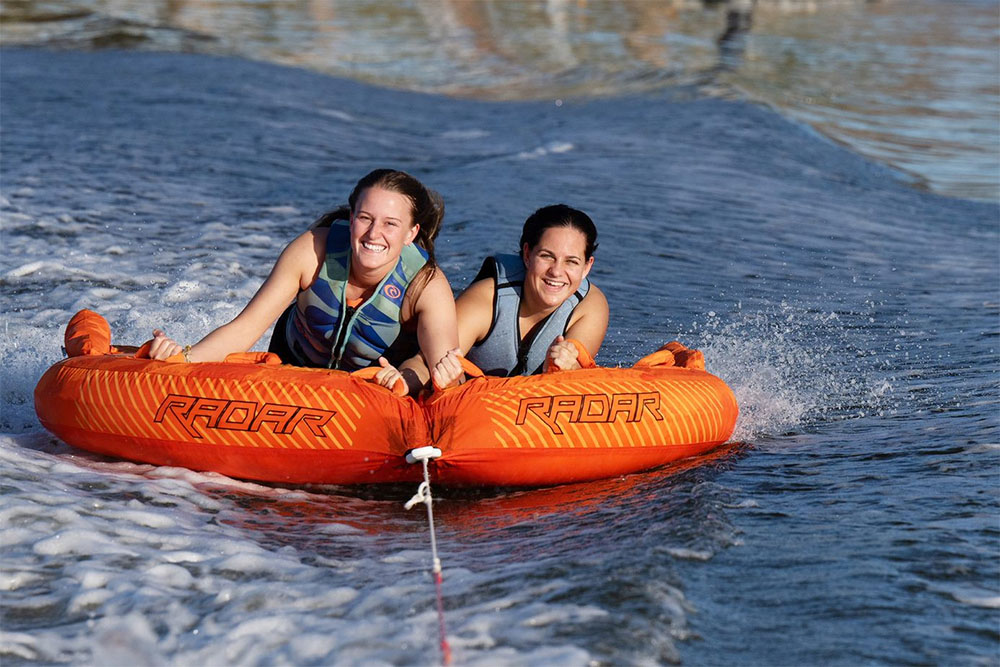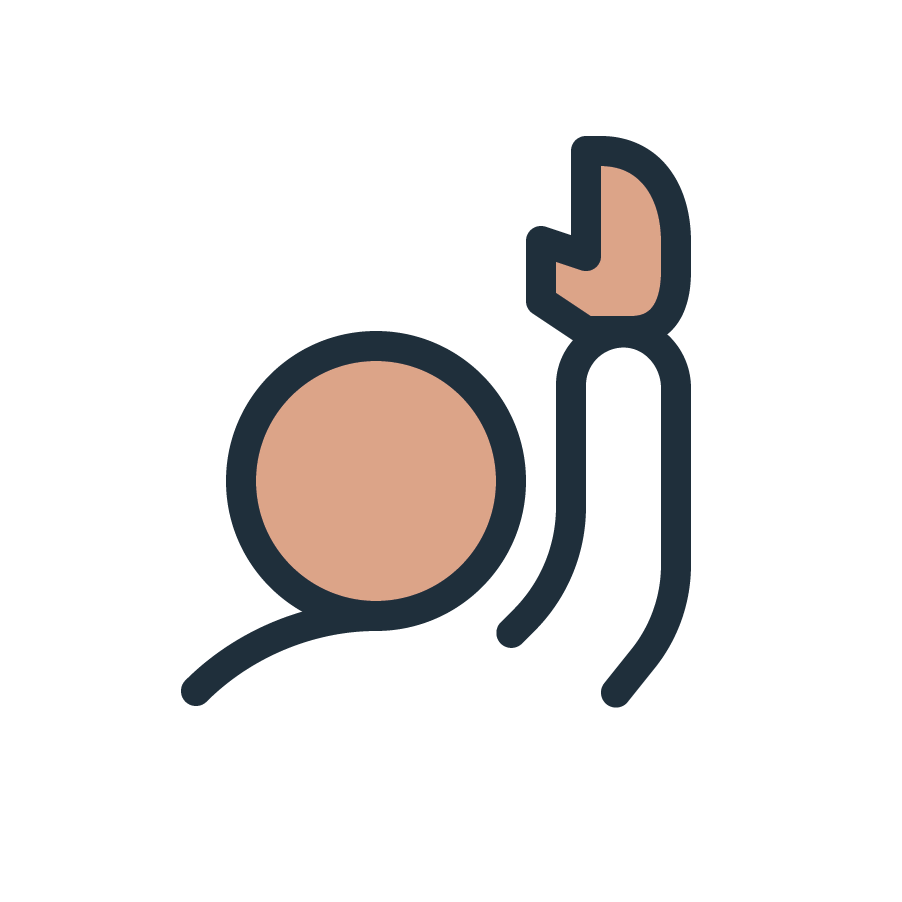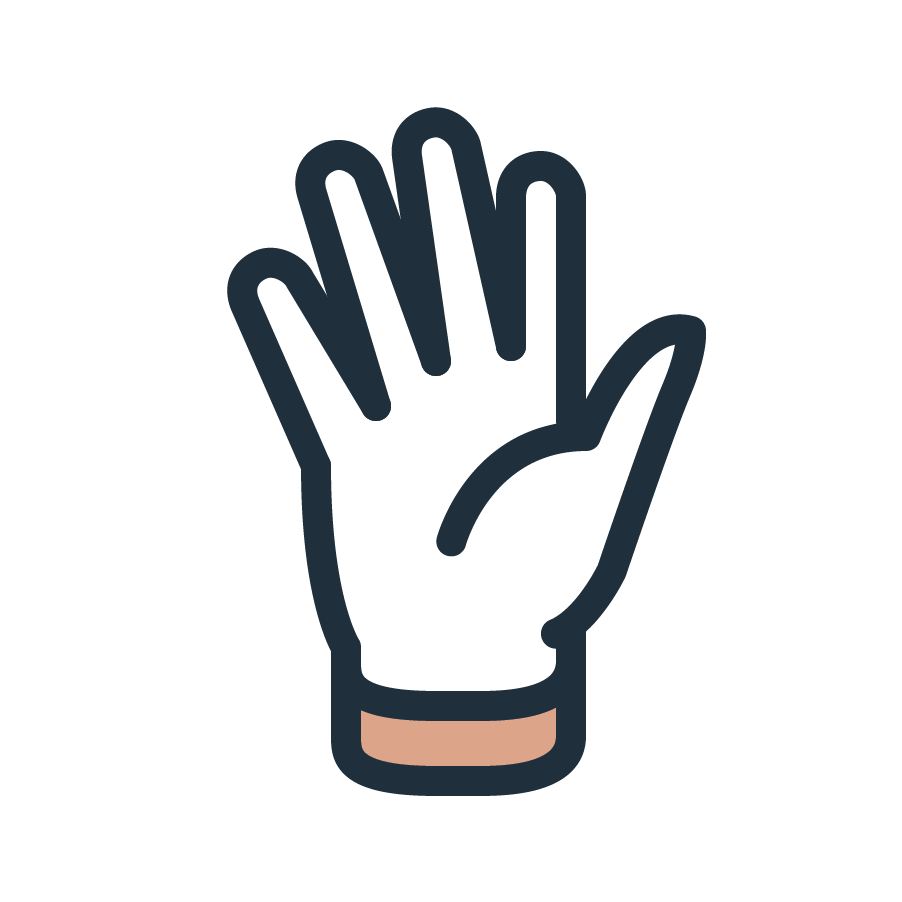Towing and boating
Towing a person with a vessel is a high-risk activity.
Skippers need to be aware that there may be hazards in the water and to use caution when operating. To reduce the risk associated with water skiing it is important that skippers familiarise themselves with:
- Rules and regulations
- The layout of the river and any hazards.
- The impact vessel wake will have on flooded shore infrastructure (shacks, levy banks and moored vessels).
- The location of the take-off and landing areas.
- Any shallow water areas or other hazards that may not be identified.
- Locks or high flowing water.
To minimise risk several special rules, apply to water skiing. This includes keeping clear of other vessels and non-powered craft like rowing boats, canoes, and to being mindful of the effect of your boat wash.
As a skipper it is important you know the rules and safety information. It’s your responsibility to ensure the safety of your crew and skiers. Knowing and following these rules will help keep everyone safe while having fun.

Towing activities
Towing involves a vessel pulling a person and watersport equipment with a rope (or line) to skim on the surface of the water. Towing activities include:
- water skiing
- kneeboarding or aquaplaning
- parasailing (open parachute)
- wakeboarding
- riding on an inflatable inner tube, raft or biscuit.
When you are towing a person or you are near someone being towed, take extra care. Follow the rules to keep everyone safe while having fun.
General rules
- You must hold a boat licence and be at least 16 years of age to skipper a vessel towing someone.
- Wear a lifejacket when required
- You must never tow at night. Waterskiing is not permitted between sunset and sunrise.
- .05 blood alcohol limits apply to skippers, observers and skiers as well as drug blood content limit restrictions.
- No more than three people, or one device carrying up to three people, may be towed at one time.
Where can you tow
It's strongly recommended that you only tow where you can keep a minimum distance from people in the water, other vessels and structures. For example, in more open and less congested areas.
Always keep a lookout for floating logs, shoals, snags or other unexpected hazards and structures in the area.
When towing on coastal waters and inland rivers, be aware of cold water, fast currents and riverbanks.
In some areas, you must not tow. This may be because of the excessive wash caused by the vessel or nearby hazards. You must follow any signs showing what activities are not allowed.
Water skiers, wakeboarders, wakesurfers
- Every person being towed must wear an approved level 50 or 50S lifejacket.
- A skier falling into the water must (unless injured) hold an arm or ski vertically in the air to signal their presence.
Skippers
Before commencing skiing, it is recommended that skippers brief each participant on their roles and responsibilities, hand signals and procedures associated with water skiing, such as recovering and reboarding of a downed skier.
Care should also be taken to brief participants on the location and use of safety equipment on-board the vessel and measures to avoid propeller strike.
It is important skippers know and understand the following before towing a skier:
- Turns on leaving, approaching or in front of a take-off area must be made in an anti-clockwise direction, keeping to the starboard side of the waterway.
- Boats leaving a take-off area must keep out of the way of boats arriving at a take-off area. This means that boats entering the take-off area have the right of way.
- Ski ropes or skis trailing from a boat must be removed from the water before arriving at a take-off area.
- Dropped skis must not be left in the water as they present a hazard to other traffic.
- A boat must not travel within 100 metres of, or directly behind, a person who is being towed by another boat.
When underway:
- Follow the required direction of travel and remain well clear of the riverbank.
- Be alert and maintain a good lookout for other vessels, floating debris, under water hazards and downed skiers.
- Be courteous of other users and keep clear of swimmers, Shack, levy banks, slower moving vessels, paddle craft and sail craft.
- With a bit of planning, courtesy and attention to safety, all users of will be able to enjoy their day out.
Observers
- Both skipper and observer must be at least 16 years of age. A person between 12 and 15 years of age may only act as an observer if they hold a special boat operator's permit and the skipper is at least 18 years of age.
- Waterskiing boats must carry an observer in addition to the skipper. The observer must continuously watch the skier and give the operator of the boat any directions necessary to ensure the safety of the skier.
- The universally recognised hand signals that observers should know are below:
- Speed up - The thumb or palm up gesture is used to indicate an increase in speed.

- Slow down - The thumb or palm down gesture is used to indicate a decrease in speed.

- Turn - A circling motion with the hand with arm extended above the head indicates a turn and can be followed by pointing in the direction of the turn.

- Back to shore - A pat on the top of the head indicates the desire to return to shore.

- Cut motor - A finger motion across the throat says “stop the vessel immediately!”

- I’m OK - Skier waves a hand or ski to say “I’m not hurt” and indicates their position in the water.

- Stop - Hand raised with fingers outstretched.

- All OK - An ‘O’ made with thumb and index finger indicates that everything is fine.

- Speed up - The thumb or palm up gesture is used to indicate an increase in speed.


